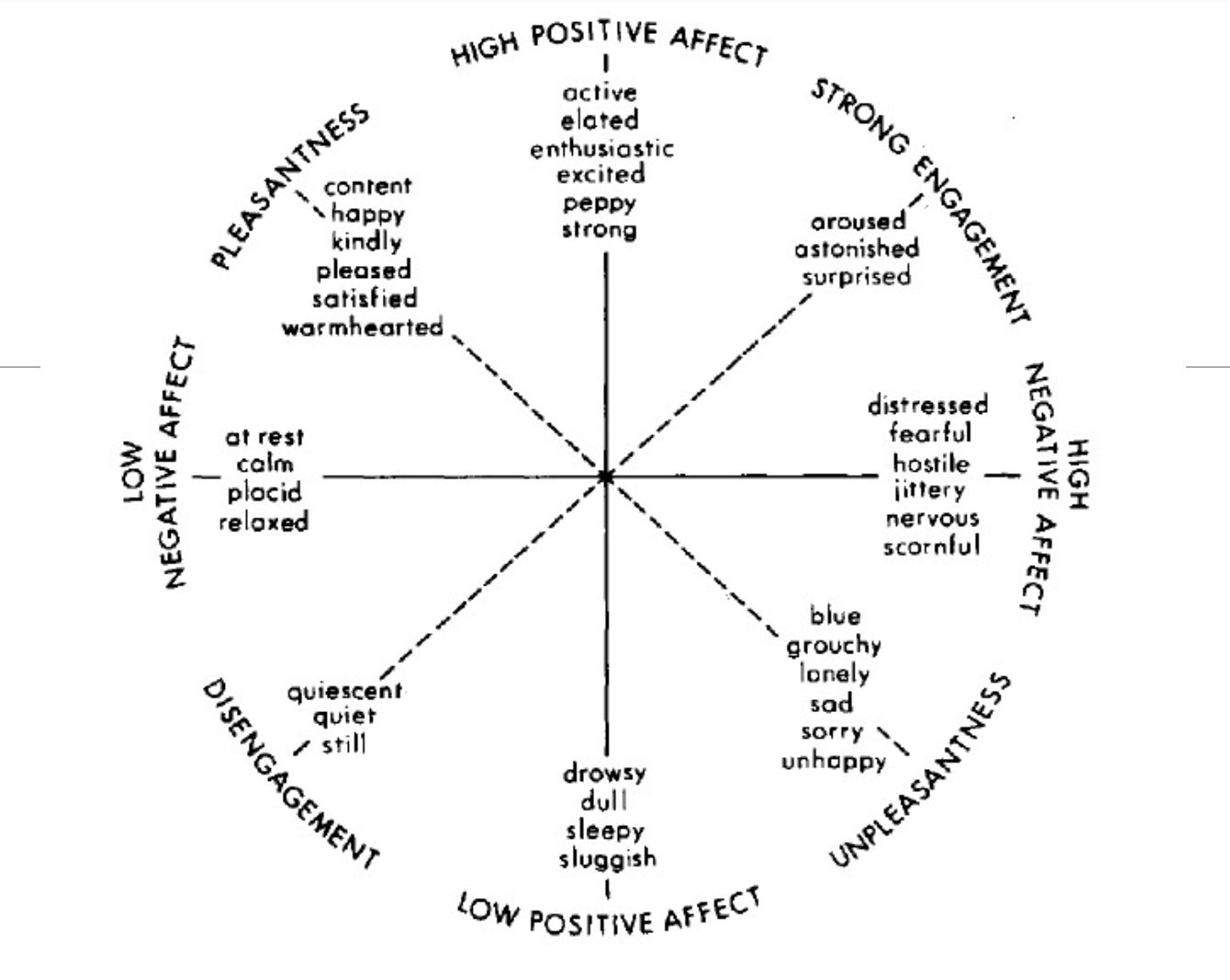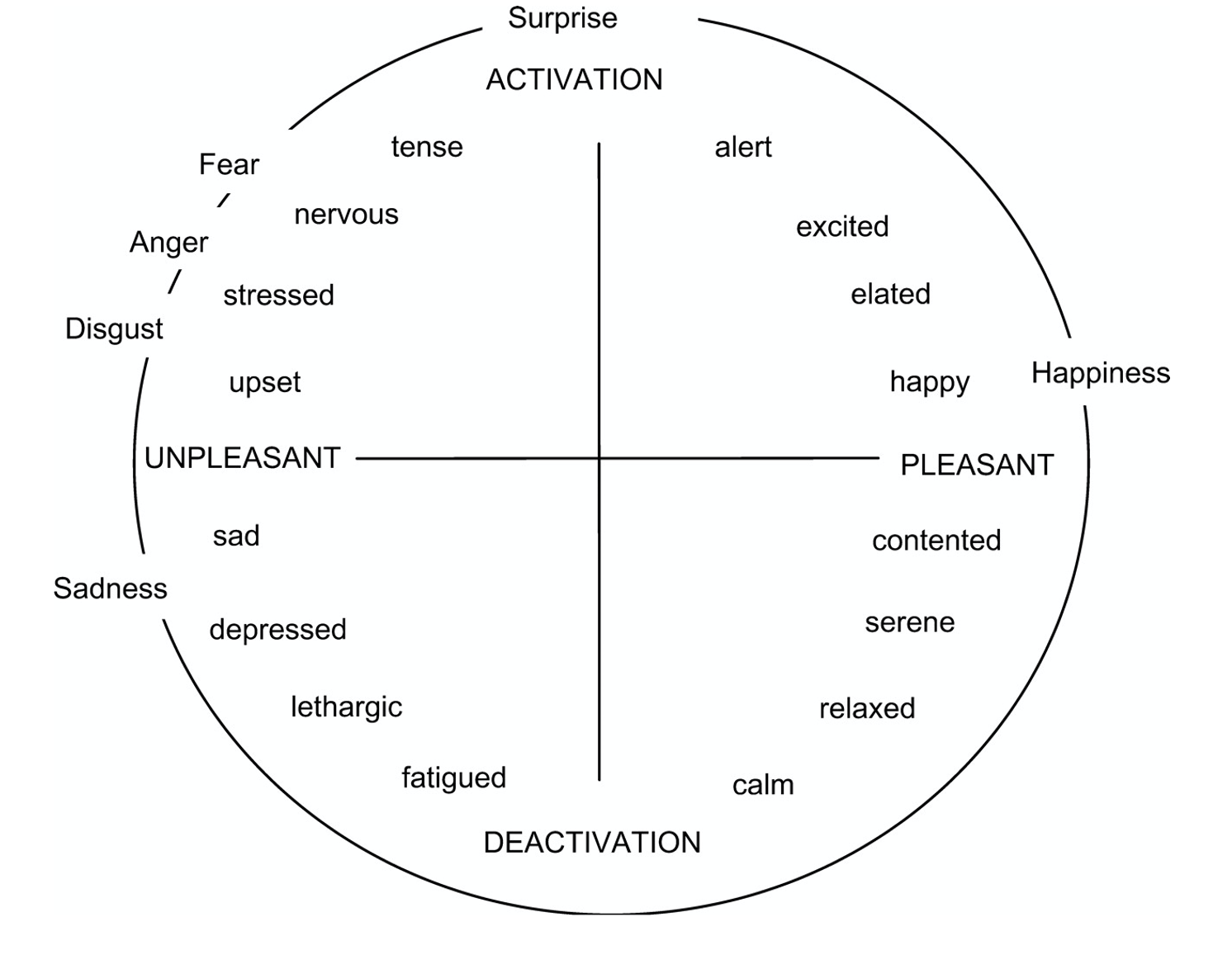Chapter 8: Fear, Anxiety, and Stress
Fear: Subjective Feelings
Dimensional models view fear as highly unpleasant and highly arousing. Russell’s (1980; see Figure 4) model views fear as higher in arousal than anger and disgust, but equal in unpleasantness. Compared to surprise, fear is lower in arousal, but higher in unpleasantness.
Figure 4
Russell’s (1980) Circumplex Model
Reproduced from “Independence and bipolarity in the structure of current affect,” by L. Feldman Barrett and J.A. Russell, 1998, Journal of Personality and Social Psychology, 74(4), p. 970 (Independence and bipolarity in the structure of current affect.). Copyright 1998 by the American Psychological Association.
Watson and Tellegen’s circumplex (1985; see Figure 5) views fear as high in NA, suggesting that fear is a highly activating negative emotion. In addition, this model views fear and anger (i.e., “hostile”) as similar in activation and unpleasantness. Compared to surprise, fear is more unpleasant and lower in arousal.
Figure 5
Watson and Tellegen’s (1985) Circumplex Model



